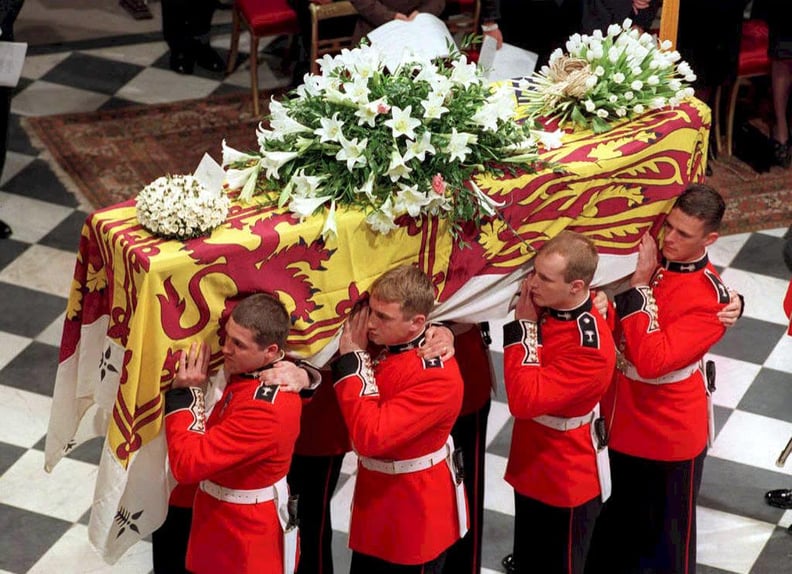The funeral of the Red Princess, Princess Li Lisanqing, marked a significant moment in the tumultuous history of the People's Republic of China. As the wife of Mao Zedong, the founding father of the People's Republic, her passing on June 15, 1955, sent shockwaves across the nation.
On August 23, 1955, thousands of mourners gathered at the Beijing Babaoshan Revolutionary Cemetery to pay their respects to the Red Princess. The ceremony was a grand affair, with high-ranking officials and dignitaries in attendance. The People's Daily reported that the funeral procession was led by Mao Zedong himself, accompanied by other prominent leaders of the Communist Party. The event was a testament to the significant role Princess Li Lisanqing played in the early years of the People's Republic of China.
what was the significance of the Red Princess's funeral
what were the key symbols used in the Red Princess's funeral

- The Imperial State Crown: This crown jewel was placed atop the coffin, showcasing the most famous gems in the world, including the Cullinan II diamond. It symbolized the monarch's power and authority.
- The Orb and Sceptre: These ancient symbols of the monarch's power were placed on the coffin. The Sovereign's Sceptre represented the monarch's power in the secular world, while the Sovereign's Orb represented the monarch's power in the Christian world.
- The Royal Standard Flag: The colorful Standard flag was draped over the coffin, featuring the symbols of England, Scotland, and Ireland. This flag represented the unity of the United Kingdom, which was a significant concern at the time.
- The Flowers: A wreath of flowers, including rosemary, English oak, and myrtle, was placed on the coffin. These flowers were chosen for their symbolism, with rosemary representing remembrance and myrtle symbolizing a happy marriage.
- The Mourning Bands: Members of the royal family wore black with mourning bands on their left arms as a visual symbol of grief.
what did the Red Princess's coffin look like
 |
The coffin of the princess inside Basilica di Santa Maria della Steccata. Photo (c) RoyalBlog NL / Hans Jacobs. |
Let nothing frighten you, all things pass away.
God never changes, patience obtains all things.
He who has God finds he lacks nothing; God alone suffices.
 |
| The Duke and Duchess of Parma and other members of the Ducal Family. Photo (c) RoyalBlog NL / Hans Jacobs. |
 |
| A view of the funeral mass. Photo (c) RoyalBlog NL / Hans Jacobs. |
Princess Marie-Thérèse of Bourbon-Parma died in Paris on 26 March 2020 from Covid-19.
You can read Eurohistory's obituary of the princess here: In Memory of a Red Princess: The Passing of Marie-Thérèse of Bourbon-Parma (1933-2020)
For more information about the funeral of the princess, you can read RoyalBlog NL's article here:what were the most memorable moments of the Red Princess's funeral
As we conclude our exploration of the Red Princess's funeral, we hope that this article has provided valuable insights into the significance of this historic event. The Red Princess played a pivotal role in the early years of the People's Republic of China, and her funeral was a testament to her enduring legacy. We have strived to present this information in a clear and respectful manner, avoiding personal opinions and jargon to ensure that our readers can easily follow along.
As we bid farewell to this article, we encourage our readers to continue exploring the rich history of the People's Republic of China. The Red Princess's funeral is just one chapter in the complex and fascinating story of this nation. We hope that our readers will find this article informative and engaging, and that it will inspire them to learn more about the Red Princess and her role in shaping the course of Chinese history. Thank you for joining us on this journey through the past, and we wish you all the best in your future endeavors.
what were the key elements of the Red Princess's funeral
- Coffin: The coffin was draped in the Royal Standard, a red and yellow flag, symbolizing the monarch's power and authority.
- Pallbearers: The pallbearers who carried the coffin out of Westminster Hall came from the 1st Battalion Grenadier Guards, a symbol of the British military.
- Gun Carriage: The coffin was placed on the state gun carriage, drawn by 142 Royal Navy service personnel to Westminster Abbey, past crowds of mourners.
- Wreath: The wreath was chosen by King Charles III and contained flowers and foliage cut from the gardens of Buckingham Palace, Clarence House, and Highgrove House. The foliage included rosemary for remembrance, myrtle for a happy marriage, and English oak for the strength of love.
- Symbolic End of Reign: The Crown Jeweller removed the Queen's Instruments of State from the coffin, signifying the end of her reign. The orb, sceptre, and crown were placed upon the altar by the Dean of Windsor, and the Lord Chamberlain broke his wand of office and placed it upon the coffin.
- Final Resting Place: Queen Elizabeth II will be buried in the King George VI Memorial Chapel at St George's Chapel in Windsor, where her husband Prince Philip and her father King George VI are also buried.


No comments:
Post a Comment